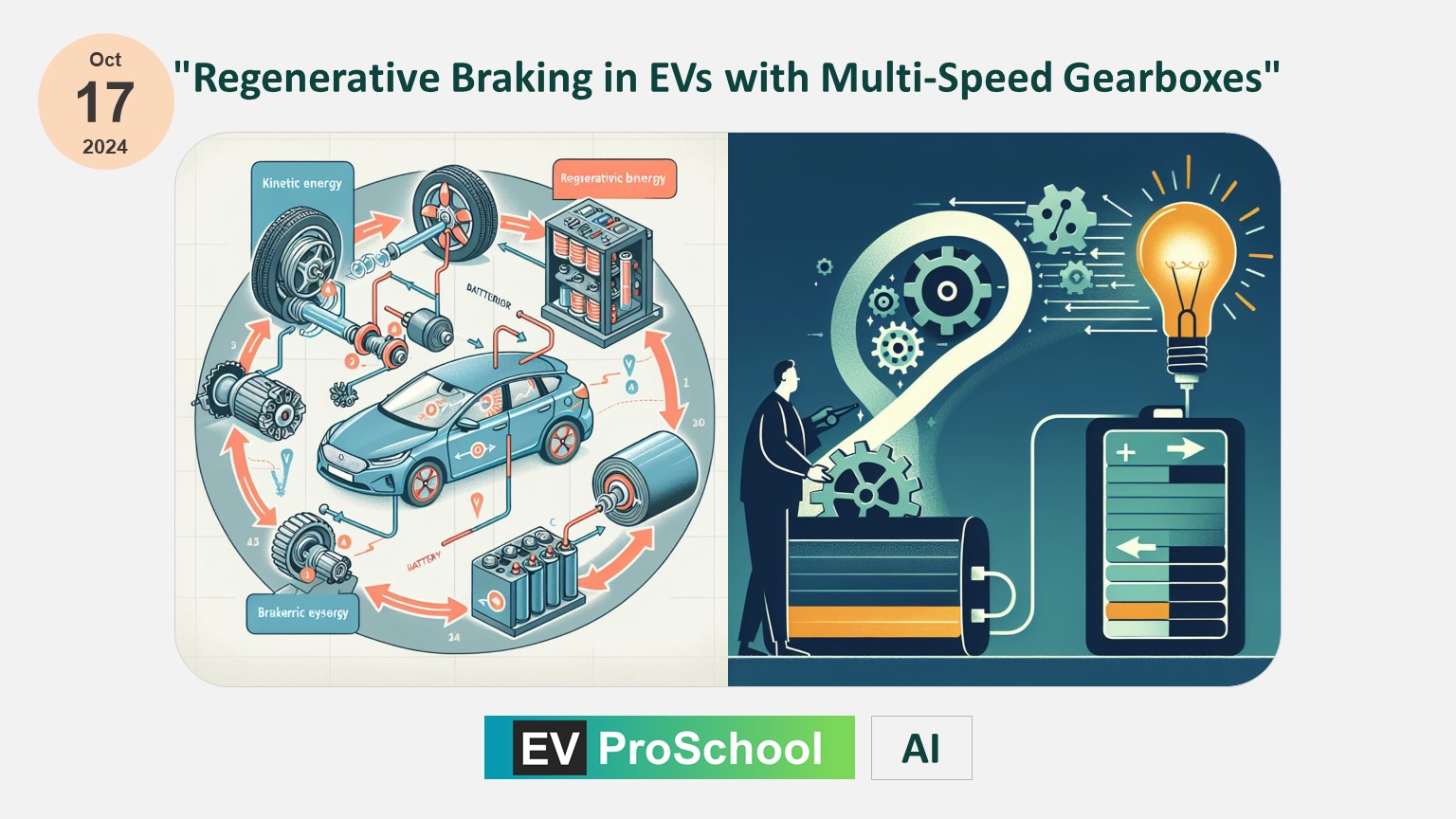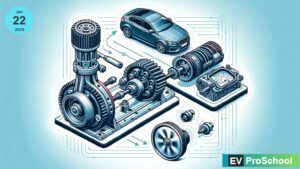Electric vehicles (EVs) have become synonymous with innovation in the automotive world, offering cleaner and more efficient alternatives to traditional gasoline-powered cars. One of the key features that make EVs highly efficient is regenerative braking. This system allows the vehicle to recover energy during deceleration and feed it back to the battery, enhancing the overall range. But when you add a multi-speed gearbox into the equation, how does regenerative braking work, and does it operate differently compared to single-speed gearboxes? Let’s dive in.
What is Regenerative Braking?
Regenerative braking is an energy recovery mechanism in electric vehicles. When an EV slows down or decelerates, instead of relying solely on traditional friction brakes, the electric motor reverses its function and acts as a generator. This generator converts the vehicle’s kinetic energy into electrical energy, which is then fed back into the battery. This process not only extends the vehicle’s range but also reduces the wear and tear on mechanical braking components.
How Multi-Speed Gearboxes Differ from Single-Speed Gearboxes
Most electric vehicles are equipped with single-speed gearboxes. Electric motors have a wide torque range, allowing the vehicle to operate smoothly without the need for multiple gears. However, multi-speed gearboxes offer several advantages, particularly in high-performance EVs. By using different gear ratios, multi-speed gearboxes can enhance acceleration, improve efficiency at varying speeds, and optimize energy consumption.
In a multi-speed gearbox, the electric motor can operate at different rotational speeds, adjusting to the optimal range for power delivery or efficiency, depending on the gear selected. This approach can offer advantages in high-speed driving, where the motor’s efficiency drops in single-speed systems.
How Regenerative Braking Works in a Multi-Speed Gearbox
In an electric vehicle with a multi-speed gearbox, regenerative braking can be more dynamic and efficient due to the variable gear ratios. Here’s how it works:
- Variable Torque and Speed Adjustment:
In a multi-speed gearbox, the motor can change gears based on the driving conditions. When regenerative braking is applied, the gearbox can adjust the gear ratio to a more optimal level, allowing the motor to extract the maximum energy at different speeds. For instance, when driving at high speeds, a higher gear may be selected to slow the vehicle down while maximizing energy recovery. - Enhanced Energy Recovery:
By selecting the appropriate gear during deceleration, the multi-speed gearbox ensures that the motor operates in the most efficient range for regenerative braking. This allows the vehicle to recover more energy compared to a single-speed system, which operates at a fixed ratio. - Smooth Deceleration:
Regenerative braking in a multi-speed gearbox can provide smoother and more controlled deceleration. As the vehicle slows down, the gearbox can shift down gears to maintain an optimal motor speed for energy recovery, ensuring that braking is both effective and comfortable for the driver. - Reduced Mechanical Braking Dependency:
Multi-speed gearboxes allow for more aggressive regenerative braking in certain driving conditions, reducing the need for mechanical friction brakes. This not only increases the energy fed back into the battery but also extends the lifespan of the mechanical brake components.
Challenges of Regenerative Braking in Multi-Speed Gearboxes
While multi-speed gearboxes can enhance regenerative braking, there are also some challenges involved:
- Complexity:
Multi-speed gearboxes are mechanically more complex than single-speed systems, which can make the regenerative braking process more intricate. Managing the interaction between the motor, gearbox, and braking system requires advanced control systems to ensure that the gear changes are smooth and energy recovery is maximized. - Efficiency Losses During Gear Shifts:
During a gear shift, there may be a momentary loss of efficiency as the motor adjusts to the new gear. This can slightly reduce the overall amount of energy recovered compared to a single-speed system, which operates without any gear changes.
Conclusion
Electric vehicles with multi-speed gearboxes have the potential to optimize regenerative braking by allowing the motor to operate in more efficient ranges at various speeds. This can result in enhanced energy recovery, smoother deceleration, and reduced reliance on mechanical brakes. However, the complexity of multi-speed systems and potential efficiency losses during gear shifts need to be carefully managed.
In the end, whether a multi-speed gearbox provides a significant advantage for regenerative braking largely depends on the driving conditions and the overall design of the EV. For high-performance EVs, especially those driven at higher speeds or under varying conditions, multi-speed gearboxes can offer an edge. For most day-to-day urban driving, a single-speed gearbox with regenerative braking remains an efficient and effective solution.



